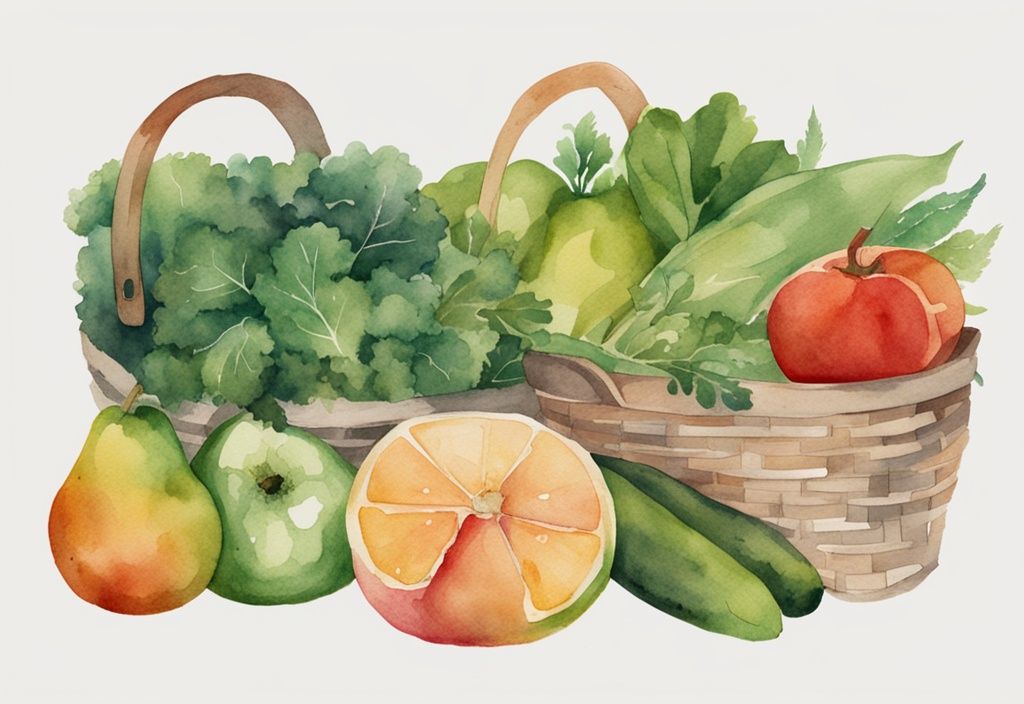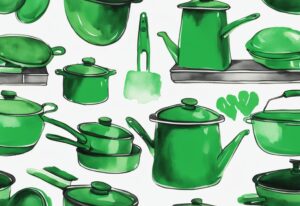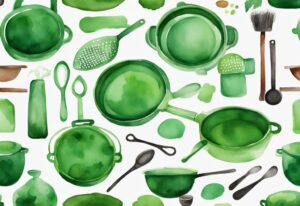Pros & Cons of Stainless Steel Cookware – Detailed Guide
Have you ever wondered why stainless steel cookware is a common sight in many kitchens? It’s not just about its shiny allure or durability. As someone who’s passionate about non-toxic living, I’ve found that understanding the pros and cons of stainless steel cookware can be a game-changer.
There’s more to this kitchen staple than meets the eye. Yes, it’s praised for its excellent heat distribution and longevity, but it also has its fair share of challenges. From food sticking to its heavy weight, it’s essential to know what you’re signing up for.
In this article, we’ll delve into the benefits and potential downsides of stainless steel cookware. Whether you’re a seasoned chef or a home cook, let’s uncover how this cookware can fit into your culinary journey.
Why Choose Stainless Steel Cookware?
Stainless steel cookware has been a game-changer in my kitchen, and I believe it can be in yours too. Its versatility is truly remarkable. You can use it for almost any cooking method—whether you’re sautéing on the stovetop or roasting in the oven. Plus, it’s compatible with induction, gas, and electric cooktops. This adaptability means I can experiment with various culinary techniques without worrying about damaging my cookware.
One of the standout features of stainless steel is its non-reactive nature. I remember the first time I cooked a tomato-based sauce in a stainless steel pot. The flavors were pure and untainted, unlike my previous experiences with other materials that left a metallic aftertaste. This non-reactivity ensures that your dishes taste just as they should, preserving the natural flavors of your ingredients.
Safety is another reason I trust stainless steel cookware. Made from high-quality 18/10 stainless steel, it’s safe to use with high-acidic foods. This is crucial for me as I strive to keep potential contaminants out of my meals. Knowing that no metal particles are leaching into my food gives me peace of mind, especially when cooking for my family.
Moreover, the longevity of stainless steel cookware is something I truly appreciate. With proper care, these durable pieces can last for decades. While there are certainly pros and cons of stainless steel cookware, its durability and reliability often tip the scale in its favor for those of us who value quality in our kitchen tools. Investing in stainless steel is like investing in a long-term culinary companion that stands the test of time.
Advantages of Stainless Steel Cookware
Exploring the pros and cons of stainless steel cookware reveals a world of benefits that can transform your cooking experience. From durability to safety, each aspect contributes to making stainless steel a beloved choice in many kitchens.

Long-lasting Durability
When I first started my journey into non-toxic living, I was amazed by the durability of stainless steel cookware. It’s one of those investments that truly stands the test of time. This material resists rust, corrosion, staining, and scratching, which means you won’t have to worry about replacing your pots and pans frequently. Over the years, I’ve found that even with heavy use, my stainless steel cookware maintains its integrity, making it a reliable companion in the kitchen.
Superior Heat Distribution
One of the standout features in the pros and cons of stainless steel cookware is its ability to distribute heat evenly. This is crucial for achieving perfectly cooked meals. I remember the first time I seared a piece of fish in my stainless steel pan; the even heat distribution made all the difference. The 3-ply design, often incorporating an aluminum layer, ensures that your food cooks uniformly without any unwanted leaching of materials. It’s a game-changer for anyone who loves to sauté or sear.
Stylish and Modern Look
Beyond functionality, stainless steel cookware adds a touch of elegance to any kitchen. Its sleek, modern appearance effortlessly complements various kitchen styles. I love how a quick polish can keep my cookware looking shiny and new, making it a centerpiece in my culinary space. It’s not just about cooking; it’s about creating an environment that feels inviting and inspiring.
Safe and Non-Reactive
Safety is always at the forefront of my mind, and stainless steel cookware delivers on this front. It’s non-reactive, which means it doesn’t interfere with the flavors of acidic or alkaline foods. I often cook tomato sauces and citrus-based dishes, and I appreciate that the natural flavors remain intact. This quality makes stainless steel a trustworthy choice for preserving the essence of your meals.
Easy to Clean
In the hustle and bustle of daily life, ease of cleaning is a blessing. Most stainless steel cookware is dishwasher safe, which simplifies the cleanup process. For those stubborn stains, I’ve found that soaking in soapy water or using a heated vinegar and water solution works wonders. This ease of maintenance is invaluable, especially in a busy kitchen where time is of the essence.
Disadvantages of Stainless Steel Cookware
Heavy and Difficult to Handle
From my own kitchen adventures, I’ve found that one of the significant downsides of stainless steel cookware is its weight. The very qualities that make it so durable and robust also contribute to its heaviness. This can be quite a challenge, especially when you’re trying to maneuver a pot brimming with a delicious stew. For those of us with less strength or mobility, this can be a real hurdle. It’s crucial to think about this when you’re weighing the pros and cons of stainless steel cookware, especially if ease of use is high on your list of priorities.
Issues with Food Sticking
Ah, the sticky situation! If you’re like me and have transitioned from non-stick pans, you might find stainless steel a bit tricky at first. Food sticking is a common issue if you don’t get the hang of preheating and using enough oil. It’s a bit of a learning curve, but once you get it, it’s like riding a bike. Seasoning your cookware can help too, creating a natural non-stick layer. This is a key consideration when you’re thinking about the pros and cons of stainless steel cookware.

Hot Handles: A Safety Concern
Safety in the kitchen is something I never compromise on, and stainless steel cookware can be a bit of a hot potato in this regard. The handles can get quite hot, which can be a burn hazard if you’re not careful. I always keep my trusty oven mitts nearby. For those comparing cookware options, you might find our in-depth analysis on HexClad vs Caraway helpful. While it’s manageable, it’s definitely something to keep in mind when considering the pros and cons of stainless steel cookware, especially if safety is a top concern for you.
High Price Point
Let’s talk about the elephant in the room: the cost. High-quality stainless steel cookware can be pricey, especially those with aluminum or copper cores for better heat distribution. But from my experience, this investment often pays off in the long run with durability and performance. When you’re evaluating the pros and cons of stainless steel cookware, it’s important to weigh the initial cost against the potential for decades of reliable use.
Potential for Discoloration Over Time
While I love the durability of stainless steel, it’s not completely immune to discoloration. Over time, exposure to high heat and harsh detergents can dull its shine. Regular polishing and careful maintenance are key to keeping it looking its best. This is something to consider when you’re thinking about the pros and cons of stainless steel cookware, especially if you, like me, appreciate a kitchen that looks as good as it functions.
FAQs: Addressing Your Concerns about Stainless Steel Cookware
Stainless steel cookware is a staple in many kitchens, known for its durability and versatility. However, like any kitchen tool, it comes with its own set of advantages and challenges. Let’s explore the pros and cons of stainless steel cookware to help you make informed decisions for your culinary adventures.
Is Stainless Steel Cookware Safe for All Cooking Methods?
Absolutely! Stainless steel cookware is incredibly versatile. Whether you’re simmering on the stovetop or baking in the oven, it stands up to the task. I’ve even used it under the broiler without a hitch. It’s compatible with induction, gas, and electric cooktops, making it a reliable choice for any cooking method you prefer.
How to Prevent Food from Sticking to Stainless Steel Cookware?
Ah, the sticking issue—I’ve been there! The trick is to preheat your pan properly. Once it’s hot, add a bit of oil or fat. This creates a barrier that helps prevent sticking. I’ve also found that seasoning the cookware can work wonders. It develops a natural non-stick surface over time, making cooking a breeze.

Best Practices for Cleaning Stainless Steel Cookware
While stainless steel cookware is generally dishwasher safe, I prefer hand washing to keep it gleaming. For those stubborn stains, soaking in soapy water or using a heated vinegar and water solution does the trick. Just steer clear of harsh detergents—they can cause discoloration. Trust me, a little extra care goes a long way in maintaining its shine.
Are There Any Health Risks Associated with Stainless Steel Cookware?
For most people, stainless steel cookware poses no health risks. However, if you have allergies to chromium or nickel, it’s something to consider. There are nickel-free options available, though they might be more prone to corrosion. It’s all about weighing your specific health needs and making the best choice for you.
Conclusion: Is Stainless Steel Cookware Right for You?
As I sit in my cozy kitchen, reflecting on the pros and cons of stainless steel cookware, I find myself drawn to its remarkable durability and versatility. It’s like having a trusty friend by your side, always ready to tackle any culinary challenge. The sleek, modern aesthetic of stainless steel adds a touch of elegance to any kitchen, making it a favorite for those who cherish both form and function.
But let’s not overlook the challenges. The weight of stainless steel cookware can be daunting, especially if you’re like me and sometimes struggle with heavy pots. And yes, achieving that perfect non-stick surface can be a bit of a learning curve. It requires patience, proper preheating, and just the right amount of oil. Yet, once mastered, it opens up a world of cooking possibilities.
Cost is another factor to consider. High-quality stainless steel often comes with a higher price tag, but in my experience, it’s an investment that pays off in longevity and reliability. For those who prioritize long-lasting cookware and are willing to invest time in mastering its use, the rewards are significant.
Ultimately, the decision rests on your personal cooking habits and preferences. If you value durability and are ready to embrace the learning journey, stainless steel cookware might just be the perfect fit for your kitchen. Remember, every choice we make in our kitchens is a step towards a healthier lifestyle, both for us and for our planet.
Hi, I’m Olivia Green, the voice behind nontoxicways.com. I’m passionate about helping you make the shift to a healthier, non-toxic lifestyle without feeling overwhelmed. I love sharing my personal journey, from small changes to big transformations, along with practical tips that make it all feel doable. My goal is to inspire and guide you toward a lifestyle that benefits both your well-being and the planet. Let’s take this journey together, one simple step at a time!














Post Comment